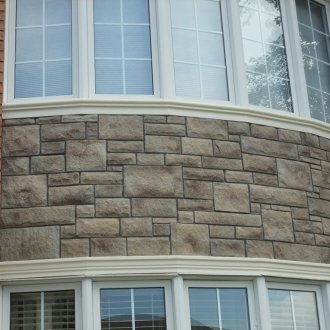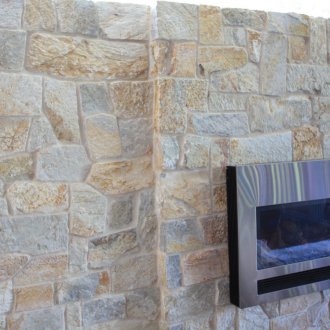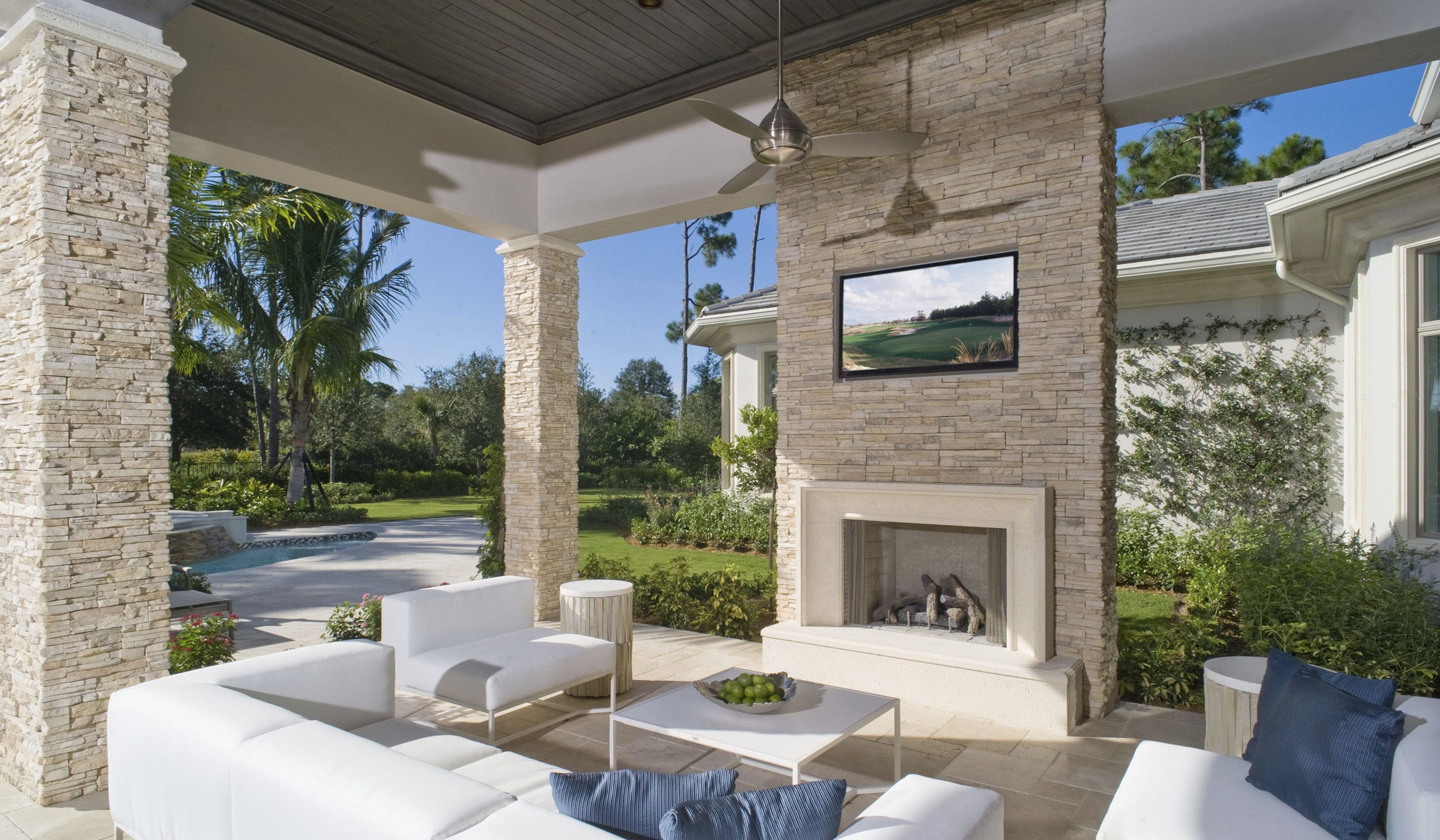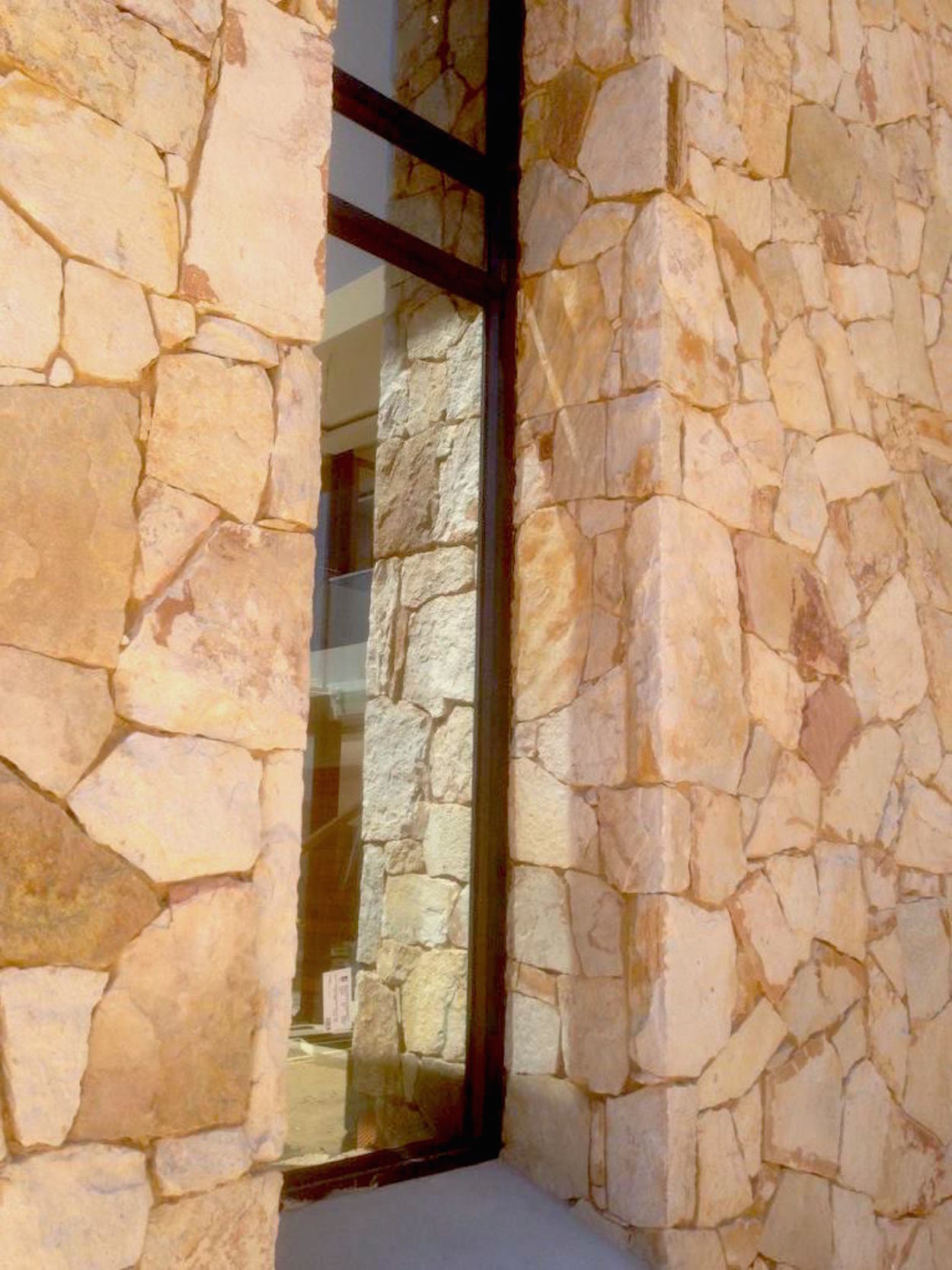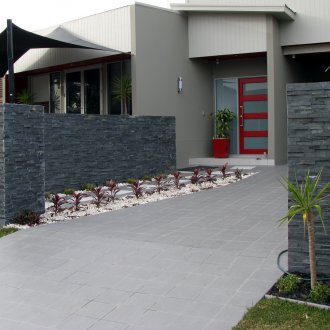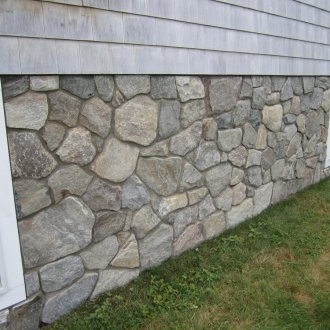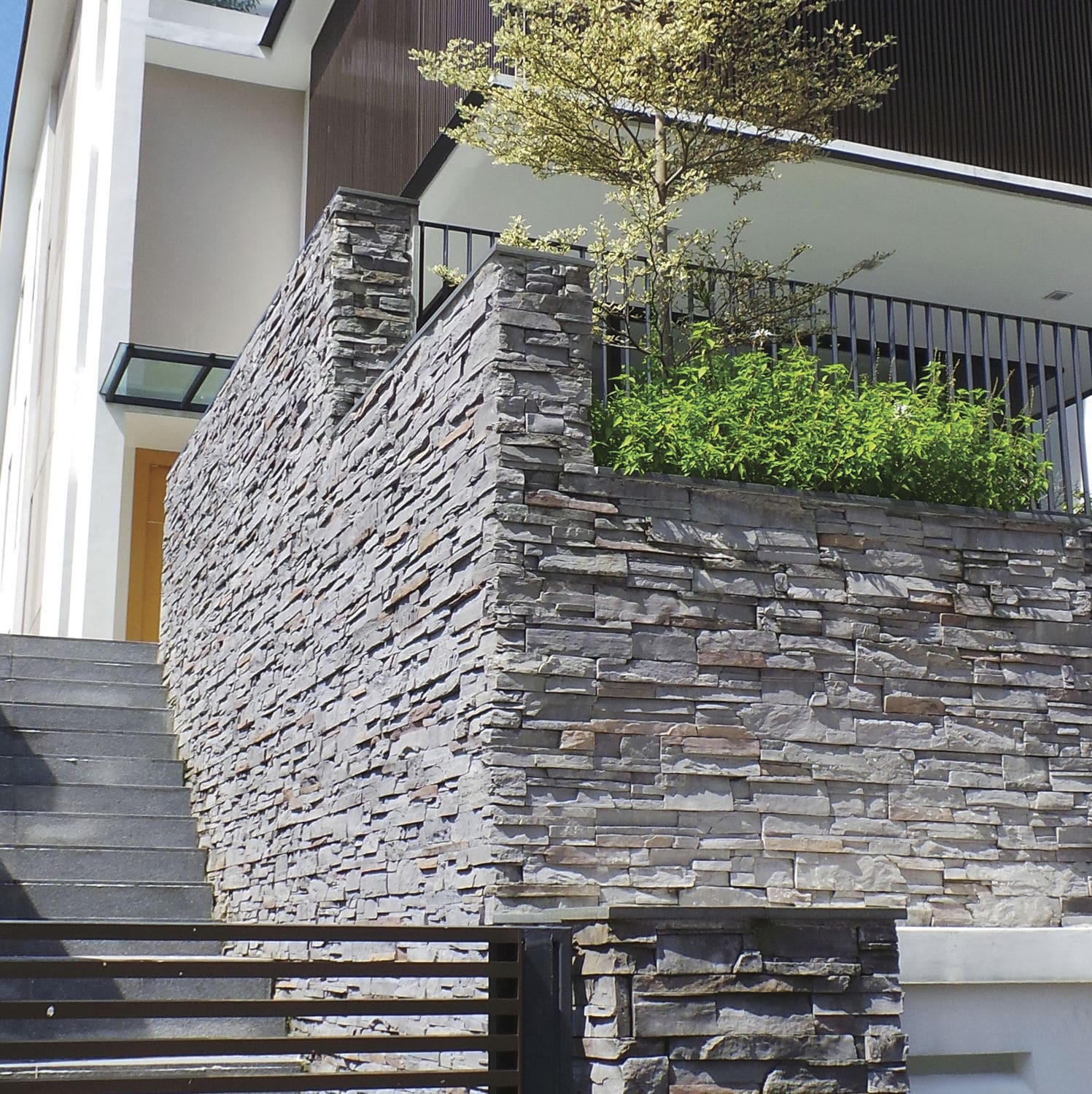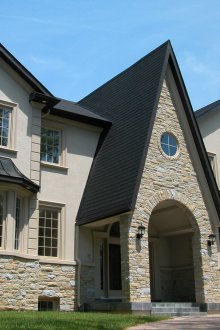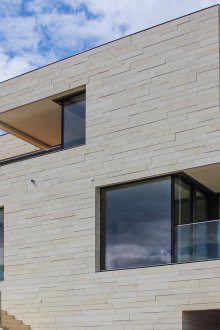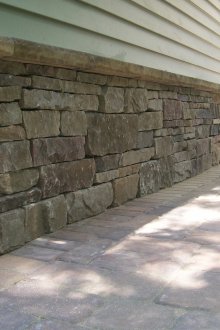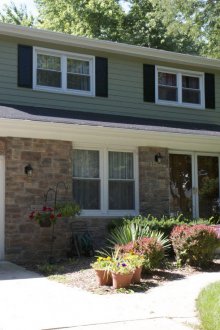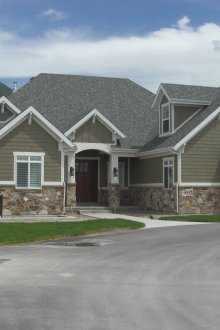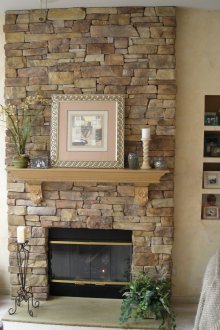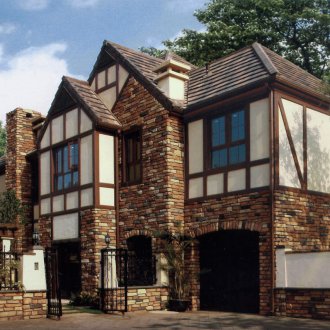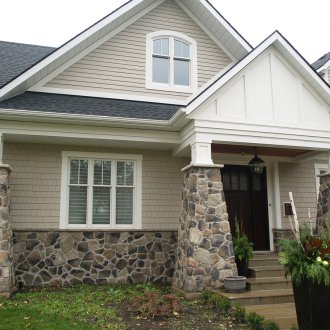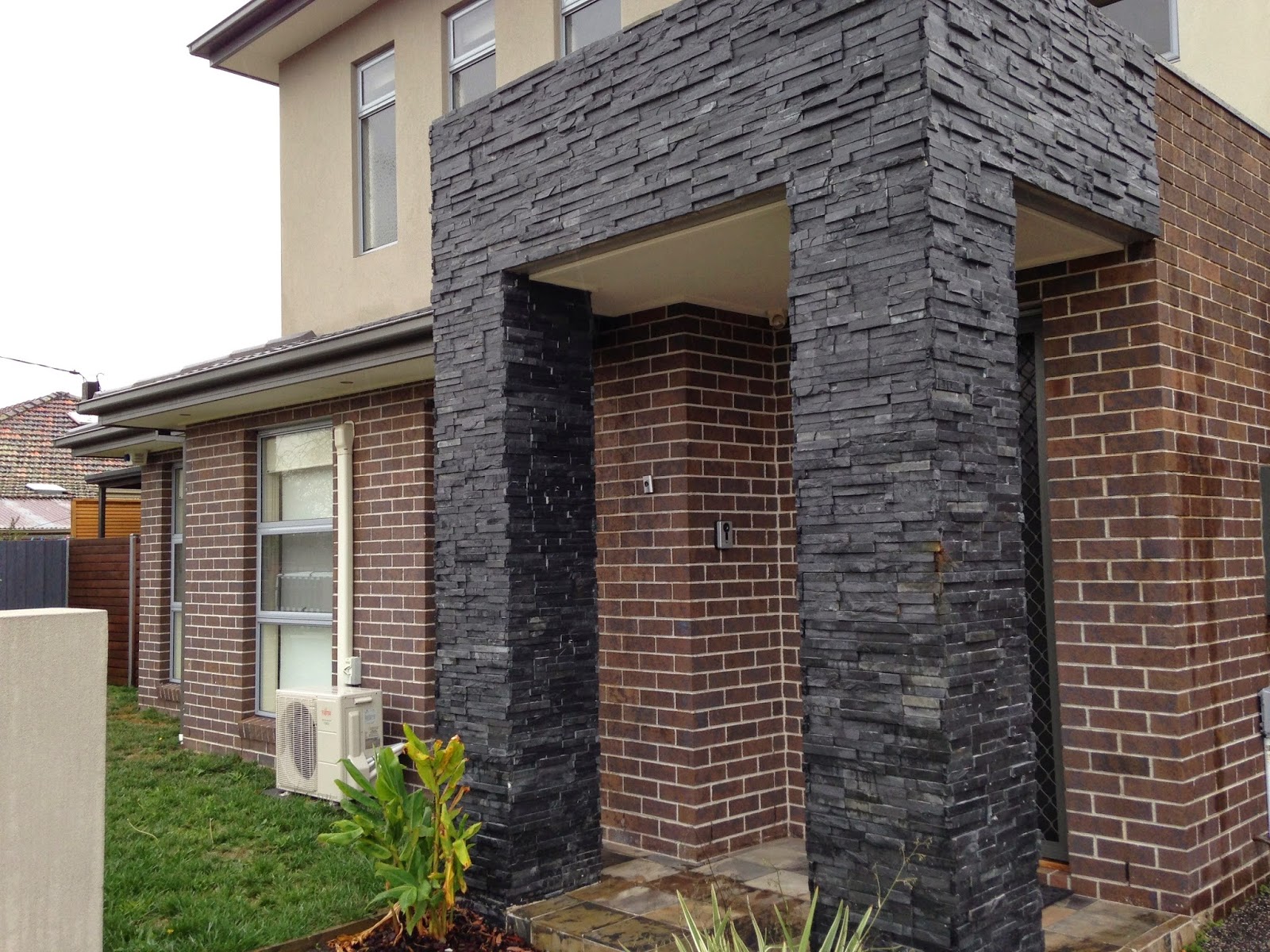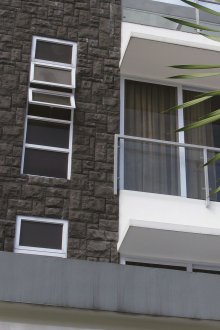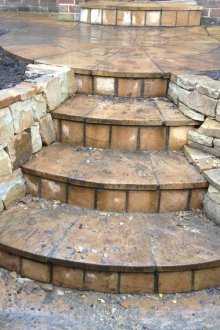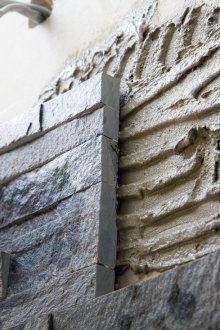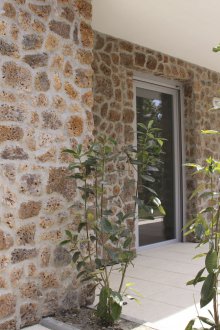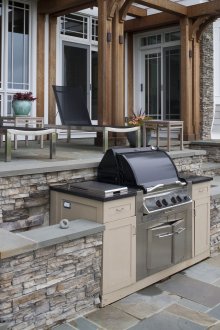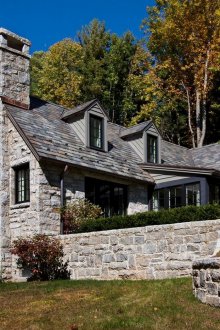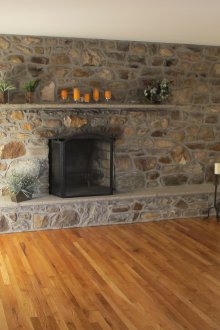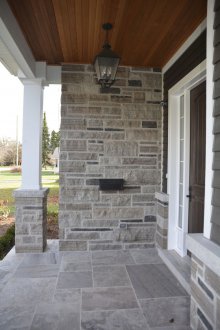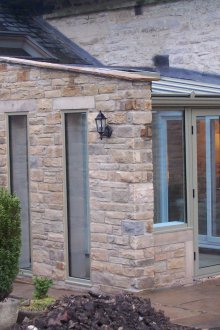Facing stone in the exterior: natural motifs (25 photos)
The use of stone in the construction of houses is due to its strength and durability. In the modern world, owners often use stone to facade cladding. This material allows you to give the appearance of the house solidity and respectability. At the same time, the facing stone for the facade does not require external repair for a long time.
Varieties
Stone material can be classified into two groups:
- A natural stone;
- Fake diamond.
Natural stone is a natural facing material that is found in the environment. Such types of facing stone belong to such a group:
- Sandstone - is considered the most refractory and strong material due to the high content of quartz in it. They are characterized by increased resistance to moisture and a sharp change in temperature. The color scheme is from green-yellow to red.
- Felsit - inherent properties of strength and thermal insulation. Used for mounting the exterior of the building and indoors.
- Granite is a facing material containing quartz, cornea and biorite. It has hardness, strength, resistance to low temperatures, high humidity.
- Limestone - characterized by an organic composition, including decomposed marine life (shell, shell, mollusk). Also composed of calcium carbonate, manganese, sulfur.
- Marble - formed by dolomite and limestone during a long reaction under the influence of high temperatures. Inherent properties of durability, beauty and long service life.
- Slate - contains mineral components, quartz, spars. It has low heat conductivity, resistance to humidity, fire, negative external influences.
- Travertine - limestone tuff with a porous content. It has a wide beige and brown color, which affects frequent use in a classic interior.
Artificial facing stone is a material manufactured in industrial enterprises. Contains resins, components of a synthetic nature, and also in some formulations there are additives of natural stones. This group includes:
- Brick - material for finishing the foundation, the surface of the walls on the outside and interior decoration. They are characterized by the fact that in the manufacture it is possible to impart various shades, shape and texture. There is a variety of it - fragmentary stone. It is used for restoration of facade works and wall changes (giving the building a vintage look).
- Gypsum stone - has increased absorption of water, so it is used for internal work.
- Ceramic stone - is made in the process of firing at high temperatures.
- Reinforced concrete material - artificial stone cobblestone, boulder, slabs. These elements are inherent in naturalness and similarity with natural stones.
- Acrylic stone - is made by casting with cold curing.
Artificial decorated facing stone is often used in the construction industry. Especially these types: granite, agglomerate, torn stone, concrete stone.
Features
Natural facing stone has the following features:
- Its installation protects buildings from external negative influences and contributes to an increase in the operating life;
- Ease of care;
- Numerous design solutions - wild stone allows you to create a rich and beautiful design in the interior of the house, exterior decoration, interior solutions for the bath and sauna;
- Long-term operation - a stone for exterior decoration can last about 50 years without losing its appearance. This is due to the ability to withstand temperature changes.
Natural wild stone prolongs the life of the home. It can be observed not only by the owners, but also by their children, grandchildren and great-grandchildren.
Artificial stone for the facade is a good substitute for natural material. This is due to many distinctive features:
- Laying is possible outside and inside the house;
- Low price;
- Installation is easy and simple;
- You can make a stone with your own hands using a mold and a vibrating machine.
When choosing a facing stone, you should focus on desires and opportunities. Of course, the decoration with natural wild stone or artificially created has its own nuances and rules. If you take into account all the principles of laying, you can successfully use a facing stone for exterior decoration or in the interior of a house, in an apartment and for a bath.
Advantages and disadvantages
Natural materials have long been used to decorate homes. This is due to such advantages of the material:
- The uniqueness of each individual element, as they are created by nature;
- Duration of use - over time, only ennoblement of wild material occurs;
- Environmental friendliness;
- Strength;
- When installing a stone on a wall, the heat preservation in the house increases due to the presence of a grain and layered structure.
- Resistance of the laid stone to negative environmental influences and chemical compositions.
There are certain negative qualities of this material:
- A large mass that affects the foundation of the building. It must be very durable to prevent deformation and destruction of the house;
- It is difficult to lay material due to the long selection of elements
- High price.
Natural stone elements, having advantages and disadvantages, are appreciated by many consumers for many areas of use. They can be used for cladding external walls, as a fence and as a facing stone for a fireplace.
Laying artificial stone for facing the foundation and other design decorations has several advantages:
- Low cost;
- You can lay it without involving specialists;
- It is exposed to easy processing in case of need of correction.
- Finishing can be done with a variety of colored stones with different textures.
- Sheathing is done with standardized tiles, which eliminates the unnecessary waste of time on the selection of material in comparison with wild stone.
- Lighter weight, which affects the small pressure force on the foundation.
- Wide application for decoration of the external sides of the house, bath walls, for the fence.
- Long service life.
The disadvantage of artificial material is the dissimilarity with natural stones during bodily contact. You can immediately distinguish these materials by touch, but from afar it is unlikely that you can distinguish between an artificial facing stone for a base and a natural stone element.
Application rules
For the home, you can use both natural material and artificially created. It all depends on the preferences of the owner. Two methods of pinning elements are known:
- Dry - characterized by the presence of a frame for attaching tiles or panels. You can use additional thermal insulation materials. In some cases, the appearance of the building changes completely.
- Wet - consists in gluing elements with cement mortar or special glue. It is used in situations where additional insulation is not required.
To lay the material on the base “wet” method, you must adhere to certain rules:
- Preliminary cleaning of the surface from old dirt.
- If there is a difference in area, the surface should be leveled with a special compound.
- If there is a smooth surface for stone walls, a metal mesh is used.
- It is better to lay dark material on the basement, since a gray or other light stone will display all the dirt.
- Natural materials with a sawn surface should be laid on a cement mixture, and joints should be filled with sealant.
The budget option for facing is the masonry method from the die. For such purposes, sandstone, slate or artificial elements having a chipped texture are used. Castle cladding technologies are also known in order to give antiquity. Simplicity differs masonry "Shahriar". Masonry "Plateau", "Rondo" are used for decorative purposes.
The use of natural materials for interior decoration is based on their strength. Often they are used as a stone for the floor. Typically, marble and granite are selected.
Facing stone for interior decoration is used in homes when decorating a fireplace. The most commonly used stone is gypsum. It is preferable to use it in spacious rooms, and gypsum stone is used to protect arches and doorways.
Torn stone having one uneven side is used to decorate the internal walls, the outer sides of the building, fences, foundations. When using torn stone, it is not worth laying on a silicone composition, since it is not supplied to temperature fluctuations. Torn stone is often used to decorate a white bathroom to balance the color, and you can also use such material to decorate the kitchen apron.
When cladding houses with dark shades, white or gray areas from torn compositions are often used. The combination of gray and brown allows you to add zest to the cladding.
A favorite material for designers to design unusual rooms is a stone under a brick. It can be white, brown, gray or classic red. Its use contributes to the achievement of the roughness of the wall, which is often used in the decoration of the balcony, fireplace and on one of the walls of the room. For styles of loft, country, Provence, such a white stone is often used. The contrast of brown and light shades is a favorite of many design ideas.
Stone decoration allows you to create a natural atmosphere outside and inside the house. Which stone to choose for this is up to you. Knowing the advantages and disadvantages, you can choose the option that is suitable for the required tasks.
